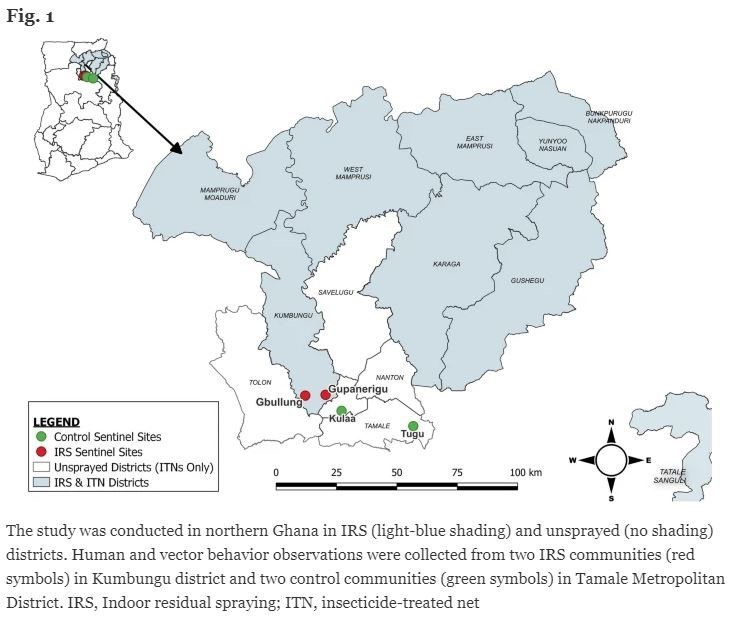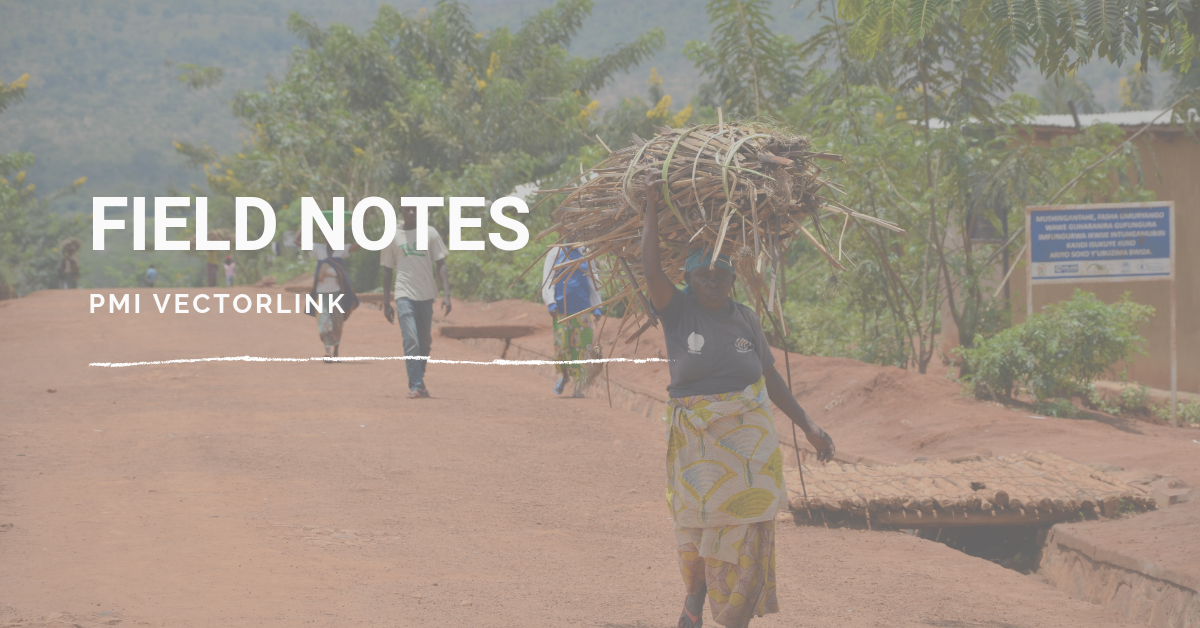 For this week’s Monday Motivation, we are featuring our team in Ghana who just had a new article published in Parasites & Vectors on “Estimating malaria transmission risk through surveillance of human-vector interactions in northern Ghana.”
For this week’s Monday Motivation, we are featuring our team in Ghana who just had a new article published in Parasites & Vectors on “Estimating malaria transmission risk through surveillance of human-vector interactions in northern Ghana.”
This article looks at malaria transmission risk based on human-vector interactions in northern Ghana where indoor residual spraying and insecticide-treated nets are the main vector control interventions. From June 2017 to April 2019, monthly human landing catches were used to measure indoor and outdoor human biting rates, which were adjusted for the length of a mosquito’s infective life and human behavior observations.
Results show that Anopheles gambiae was the primary vector species in the IRS and control communities, and their indoor and outdoor biting pattern was similar in both areas. When accounting for human behavior observations, the combined efficacy of using IRS and ITNs in reducing malaria transmission risk was 58% compared to 27% with ITNs alone. This indicates that by accounting for human behavior, ITN use alone—compared to in combination with IRS—had less impact on malaria transmission indices. However, the study identified protection gaps due to human and vector behavior patterns that allow significant human–vector interaction beyond the current control interventions. Strengthening effective communication for behavior change in net use and IRS could reduce malaria transmission even more.
Excellent work VectorLink Ghana! What an informative article.


